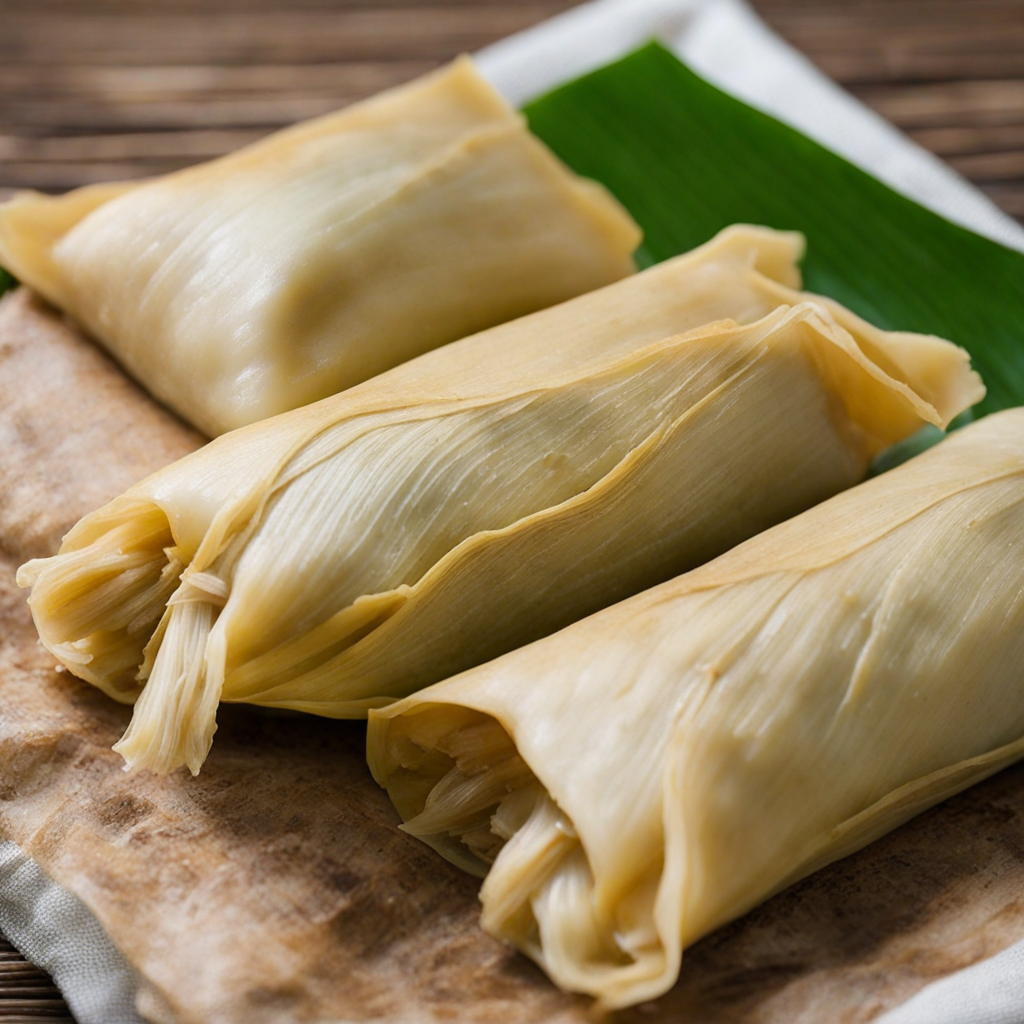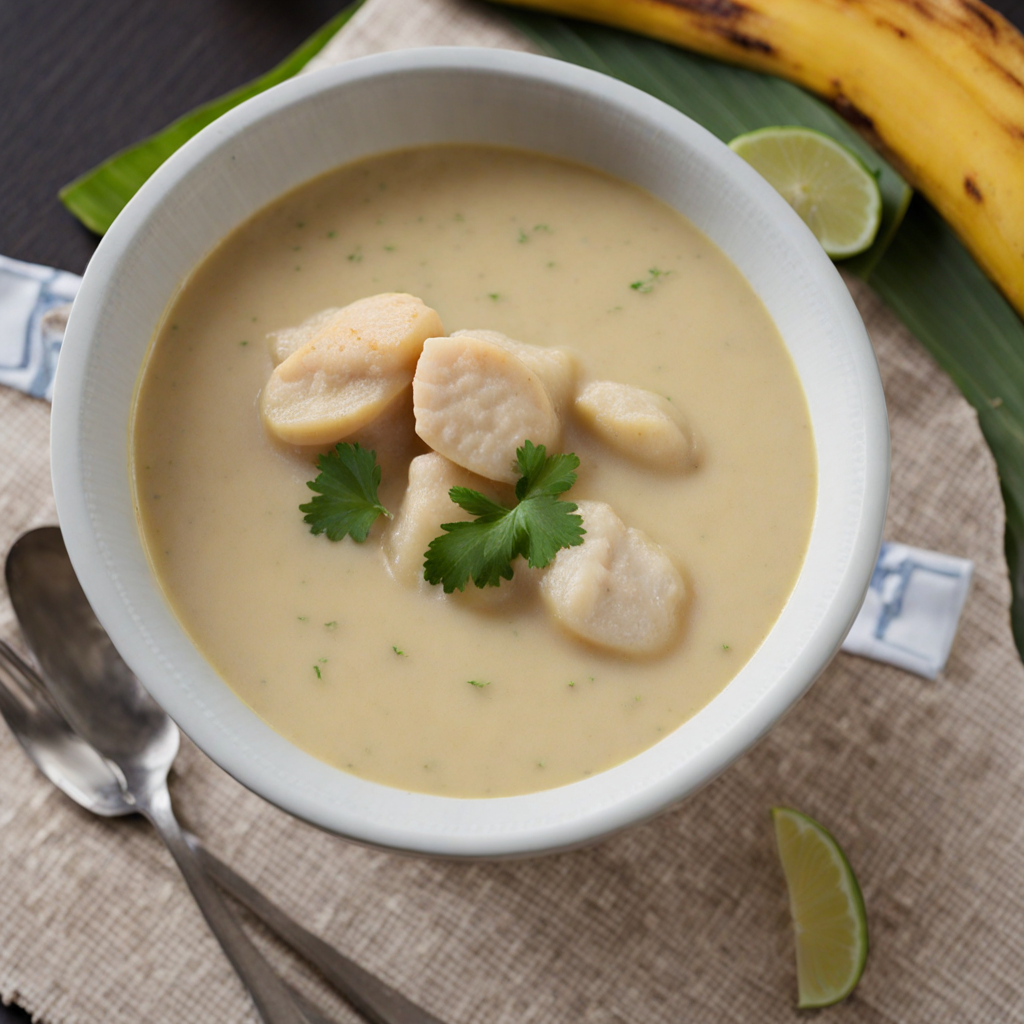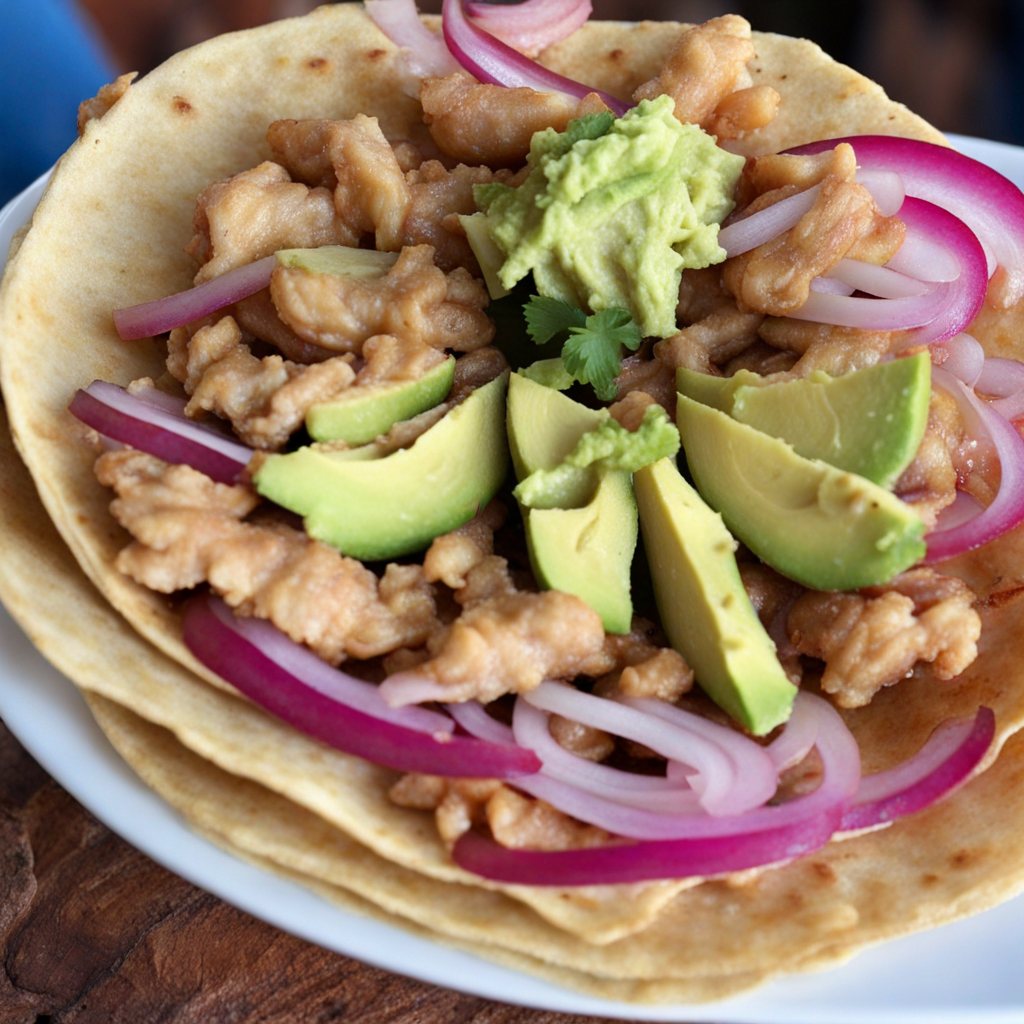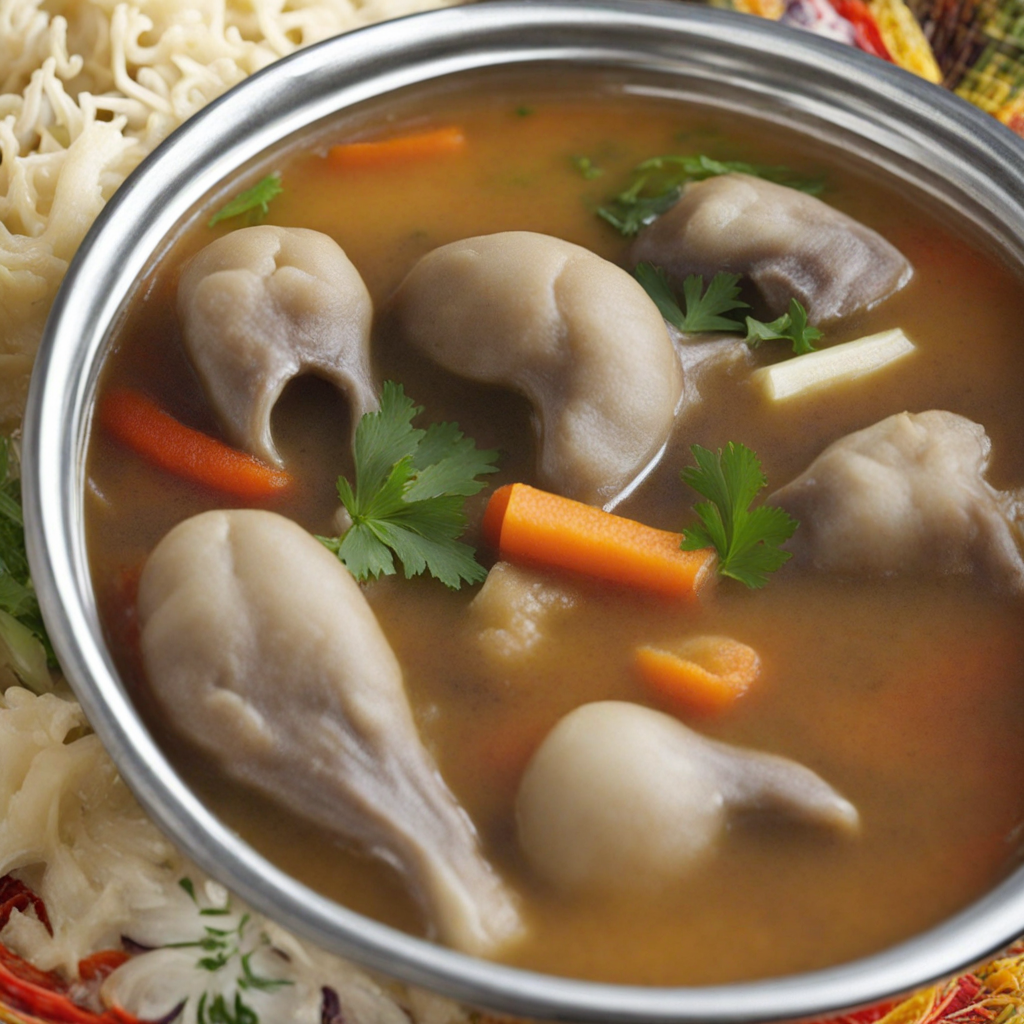Belizean Tamales
Belizean Tamales are a delightful culinary experience that showcases the rich flavors and vibrant culture of Belize. These tamales are distinctively wrapped in banana leaves, which not only add a subtle earthy aroma but also keep the dough moist and tender during cooking. The masa, or dough, is typically made from a combination of cornmeal and spices, creating a slightly sweet yet savory base that perfectly complements the fillings. The fillings often consist of seasoned meats, such as chicken or pork, mixed with a variety of herbs and spices that reflect Belize's diverse culinary influences, including Creole, Maya, and Garifuna traditions. In addition to the savory meats, Belizean Tamales can also feature a blend of vegetables, cheese, or beans, making them a versatile dish suitable for various tastes and dietary preferences. The use of traditional spices like achiote and garlic provides a depth of flavor that elevates each bite. When cooked, the tamales become beautifully infused with the aromatic essence of the banana leaves, resulting in a dish that is both hearty and satisfying. Served warm, Belizean Tamales are often accompanied by a side of spicy salsa or a tangy slaw, adding an extra layer of flavor and texture. They are a popular street food and are also enjoyed during family gatherings and celebrations, making them a beloved staple in Belizean cuisine. With each tamale, you embark on a flavorful journey that captures the spirit of Belize, leaving you with a sense of warmth and community that is so integral to this vibrant country.
How It Became This Dish
The History of Tamales in Belize: A Culinary Journey Tamales are a cherished staple of Central American cuisine, particularly in Belize, where they embody a rich tapestry of cultural influences and historical narratives. These delicious parcels, made from masa (corn dough) and filled with various ingredients, are wrapped in banana leaves or corn husks before being steamed or boiled. They carry not only flavors but also stories that trace back through time, reflecting the diverse heritage of Belize. #### Origins The story of tamales can be traced back thousands of years, rooted in the ancient civilizations of Mesoamerica. The Aztecs and Mayans are credited with the creation of tamales, using masa as a versatile base for a variety of fillings. Corn, a sacred crop to these cultures, was not merely a food source; it held profound spiritual significance. The tamale's portability made it an ideal food for warriors, travelers, and laborers, providing sustenance that could be easily transported and consumed on the go. In Belize, the origins of tamales are similarly intertwined with the country’s historical tapestry. The Maya civilization flourished in this region, with archaeological evidence suggesting that maize-based dishes were a staple. With the arrival of Spanish colonizers in the 16th century, the culinary landscape began to evolve. The blending of indigenous ingredients with European culinary techniques gave rise to the tamales we recognize today. #### Cultural Significance In Belize, tamales are more than just food; they are a symbol of cultural identity and community bonding. They are often prepared during significant celebrations, such as Christmas, Easter, and local festivals. The process of making tamales is typically a communal affair, bringing families and friends together. This tradition fosters social connections, as generations pass down techniques and recipes, ensuring the continuation of cultural heritage. The significance of tamales is further amplified by their versatility. While the traditional fillings may include meats like chicken or pork, modern interpretations have emerged, incorporating vegetarian options or local ingredients like beans, cheese, or seasonal vegetables. This adaptability reflects the diverse population of Belize, which includes Mestizo, Creole, Garifuna, and Maya communities, each contributing their own flavors and styles to the tamale. #### Development Over Time As Belize's cultural landscape evolved, so did the tamale. In the early 20th century, the influx of various immigrant groups, including the Chinese and East Indian communities, introduced new ingredients and cooking methods. This resulted in a fusion of flavors that contributed to the evolution of tamales in Belizean cuisine. For instance, the use of spices and herbs from these cultures has enriched the traditional tamale, making it a unique culinary expression. The 21st century has seen a resurgence in the popularity of tamales, both within Belize and internationally. As Belizean cuisine gains recognition on the global stage, tamales have become emblematic of the country’s culinary diversity. Food festivals and cultural events often highlight tamales, showcasing their importance in Belizean identity. Restaurants and street vendors alike have embraced this trend, offering a variety of tamales that cater to different palates. Moreover, the rise of culinary tourism in Belize has brought a renewed interest in traditional foods, including tamales. Visitors are eager to experience authentic Belizean cuisine, and tamales often feature prominently on menus, providing an opportunity for locals to share their heritage with a wider audience. Cooking classes and workshops that teach the art of tamale-making are also gaining popularity, allowing both tourists and locals to engage with this culinary tradition hands-on. #### Tamales Today Today, tamales remain a beloved dish in Belize, often enjoyed as a breakfast or lunch option. They are commonly sold by street vendors who have perfected their recipes over generations. The preparation of tamales is an art form, with each vendor boasting their own unique twist, whether it be a secret family spice blend or a special sauce served on the side. The significance of tamales extends beyond mere nourishment; they serve as a vessel for storytelling. Each tamale carries with it the history of the people who made it, the land that nourished it, and the traditions that continue to thrive. For many Belizeans, eating tamales evokes feelings of nostalgia and connection to their roots, regardless of where they are in the world. In contemporary Belize, there is a growing movement to preserve traditional cooking methods and ingredients. Community initiatives and culinary schools are dedicated to teaching younger generations the importance of local cuisine. Tamales, with their deep cultural roots, are at the forefront of these efforts, serving as a reminder of the resilience of Belizean heritage. #### Conclusion The history of tamales in Belize is a testament to the country’s rich cultural mosaic. From their ancient origins in Mesoamerica to their status as a beloved culinary icon, tamales encapsulate the spirit of community, tradition, and identity. As Belize continues to evolve, so too will the tamale, adapting to new influences while remaining a cherished symbol of its past. Whether enjoyed at a festive gathering, a family meal, or a street-side stall, each tamale represents a connection to the land, the people, and the stories that make Belize a unique culinary destination.
You may like
Discover local flavors from Belize







